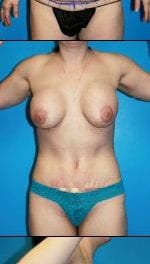By P. Daniel Ward, MD, MS, FACS
Facial plastic surgery is a field that is constantly advancing, with surgeons worldwide continuously seeking ways to improve results for their patients. We live in an exciting time where patients and surgeons are both interested in ways to enhance results in a natural way and maintain the patient’s beautiful native features.
A Shift in Rhinoplasty Techniques
When I think about advancements in facial plastic surgery, one of the most important innovations concerns a technique that was utilized decades ago. This technique, the so-called “preservation rhinoplasty” technique, was first described in the first half of the 20th century and then largely abandoned for several years. But it’s back. In fact, many of us who perform rhinoplasty and revision rhinoplasty on a regular basis—I perform approximately 300 rhinoplasty procedures per year—have incorporated elements of this practice into our armamentarium.
Simply put, preservation rhinoplasty allows the surgeon to reduce the bump on the bridge of the nose, which is one of the most requested changes. The unique element of preservation rhinoplasty is that instead of directly removing the bump from the nose, the bump is removed by reducing some structures inside of the nose, allowing the dorsum of the nose to be lowered. The advantage of this technique is that it allows the surgeon to maintain the patient’s native dorsum. This helps to minimize the risk of irregularities and contour deformities.
One of the biggest changes is the incorporation of these preservation rhinoplasty techniques with structural rhinoplasty. Structural rhinoplasty really gained steam as early as the 1980s and—for most of us who perform a lot of structural rhinoplasties—is a major component of how we think about the nose. By using structural graphs of cartilage, we can reposition and change the shape of the nose in ways that are more predictable and help minimize the risk of complications. The marriage of these techniques—the dorsal preservation technique and structural rhinoplasty—is one of the greatest innovations in rhinoplasty.
Younger Patients Seeking Facial Plastic Surgery
Another element of facial plastic surgery that is rapidly innovating is the application of facial rejuvenation techniques, which used to be reserved for patients who were concerned about looking older. We are seeing more and more young patients who are pursuing facial rejuvenation surgical procedures. I believe this shift is related to the acceptance level younger patients now have of non-surgical techniques. Patients recognize that non-surgical techniques can often lead to unnatural results and, in addition, to extended periods of downtime similar to surgery recovery.
As a result, I am performing more and more facial rejuvenation procedures on patients in their 30s, 40s, and 50s, which would normally be performed on patients in their 50s, 60s, and 70s. But we aren’t trying to make patients in their 30s to 50s look younger; we are trying to highlight their eyes and smiles by changing their facial proportions.
Moreover, a “facelift” is something that is thought of as being a technique reserved for aging patients. However, more modern techniques involve a redistribution of the volume in the facial structures to help accentuate the positives. For example, performing a vertical deep plane facial rejuvenation procedure is a technique that I utilize frequently to shift a full, lower face that is rounder than the patient would like into a more heart-shaped, attractive face.
This is not necessarily an aging face procedure, but it’s a facial rejuvenation one. I believe interest in these procedures will continue to increase and the pendulum will continue to swing more toward surgical facial rejuvenation as patients recognize the limitations of non-surgical techniques and better understand the dramatic improvements they can experience with surgery.
P. Daniel Ward, MD, MS, FACS, is a double-board certified facial plastic surgeon and owner of Ward MD and Form Derm Spa.
.





